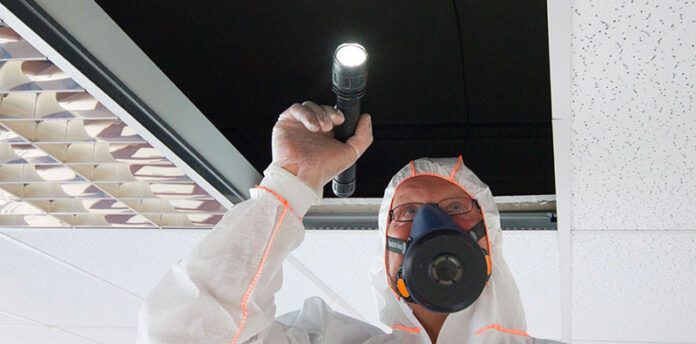Asbestos is a naturally occurring mineral that was widely used in construction throughout the 20th century due to its durability, fire resistance, and insulating properties. From roofing materials to insulation, floor tiles to pipe coverings, asbestos survey was a common component in residential and commercial buildings. Despite its benefits in construction, asbestos poses serious health risks when fibers are released into the air and inhaled.
Prolonged exposure can lead to life-threatening diseases such as asbestosis, lung cancer, and mesothelioma. One of the most significant challenges with asbestos is that it is often hidden within building materials, making it difficult to detect without professional inspection. This is where an asbestos survey becomes an essential tool for safeguarding health and protecting property.
Understanding Asbestos and Its Uses in Buildings
Asbestos was valued for its strength, resistance to heat, and durability. Its applications in homes and offices included insulation around pipes, boilers, and ducts, fireproof wall panels, roofing sheets, floor tiles, ceiling tiles, textured coatings, and adhesives. Many older buildings, particularly those constructed before the 1990s, may still contain these materials. Because asbestos fibers are microscopic, they cannot be seen with the naked eye, and damage to asbestos-containing materials can release fibers into the air. This hidden nature of asbestos makes it particularly dangerous, as individuals may be exposed without realizing it.
What an Asbestos Survey Entails
An asbestos survey is a comprehensive inspection conducted by certified professionals to locate and assess asbestos-containing materials. The survey typically includes a visual inspection, identification of suspect materials, and sampling for laboratory analysis. The two main types of asbestos surveys are the management survey and the refurbishment or demolition survey. A management survey is conducted in occupied buildings to identify asbestos that may be disturbed during normal activities. In contrast, a refurbishment or demolition survey is more intrusive, focusing on areas that will be renovated, altered, or demolished. Both survey types provide vital information that informs the safe handling, removal, or containment of asbestos.
Identifying Hidden Hazards
One of the primary advantages of an asbestos survey is its ability to uncover hidden hazards. Asbestos can be concealed in walls, ceilings, floors, roof spaces, and ductwork. Many of these areas are not regularly accessed, meaning that asbestos may remain undetected for decades. A professional survey ensures that even materials that appear undamaged or non-threatening are tested for asbestos content. This early detection is critical because disturbing hidden asbestos during routine maintenance, renovations, or demolition can release fibers into the air, posing serious health risks to anyone nearby.
Protecting Health Through Professional Assessment
Health protection is the foremost reason to conduct an asbestos survey. Asbestos fibers, when inhaled, can lodge in the lungs and cause severe respiratory conditions over time. Mesothelioma, a cancer of the lining of the lungs or abdomen, often develops decades after exposure, making early identification of asbestos crucial. An asbestos survey provides clear information about the presence and condition of asbestos-containing materials. This allows property owners and contractors to implement safe management strategies, such as encapsulation, containment, or professional removal, minimizing the risk of exposure and protecting both residents and employees.
Preventing Property Damage
In addition to health hazards, hidden asbestos can lead to significant property damage if it is not identified and managed properly. Renovation or repair work can inadvertently disturb asbestos-containing materials, contaminating surrounding areas. This contamination can require costly remediation, disrupting daily life or business operations. By conducting an asbestos survey, property owners can plan projects more effectively, identifying which materials require professional handling and ensuring that work proceeds without unnecessary delays or damage.
Legal Compliance and Regulatory Requirements
Many countries have strict regulations regarding asbestos management. Property owners and employers are legally obligated to identify and manage asbestos to minimize risks to workers, occupants, and the environment. Failure to comply can result in heavy fines, legal liabilities, or even criminal charges in severe cases. An asbestos survey ensures compliance with these regulations by providing documented evidence of inspection, risk assessment, and management recommendations. Professional surveyors are trained to follow regulatory standards, ensuring that both the survey process and any subsequent removal or containment work meet legal requirements.
Supporting Renovation and Maintenance Projects
An asbestos survey is particularly important when planning renovations or maintenance work. Whether it is upgrading insulation, replacing flooring, installing new electrical systems, or performing structural repairs, knowing the locations and conditions of asbestos-containing materials allows contractors to take appropriate precautions. This reduces the likelihood of accidental fiber release, protects workers, and ensures that the project proceeds efficiently. Homeowners and business managers can also use the survey results to prioritize areas that need professional removal or encapsulation, minimizing health risks while completing necessary improvements.
Insurance and Property Value Considerations
Having a recent asbestos survey can also impact insurance coverage and property value. Insurance companies may require documentation of asbestos management to provide coverage for older buildings. Likewise, during property sales, a survey demonstrates that the property has been professionally assessed, providing confidence to potential buyers about safety. Proper asbestos management, supported by a survey, can enhance property value by showing that hazards have been identified and addressed responsibly.
Environmental Protection
Asbestos fibers are not only a health risk to humans but also an environmental hazard if improperly handled. When asbestos-containing materials are disturbed and fibers are released, they can contaminate air, soil, and water. Professional asbestos surveys include guidance on safe handling, containment, and disposal, preventing environmental contamination. This ensures that asbestos is managed responsibly, protecting both the immediate property and the surrounding community.
Choosing a Professional Surveyor
The accuracy and safety of an asbestos survey depend heavily on the expertise of the surveyor. Certified professionals are trained to recognize asbestos in a wide range of materials, use proper sampling techniques, and provide reliable reports. Attempting to identify asbestos without professional help is risky and can result in accidental exposure. Professional surveyors also provide detailed recommendations for safe management, removal, or encapsulation, offering peace of mind for property owners and occupants.
Long-Term Benefits of an Asbestos Survey
The benefits of conducting an asbestos survey extend beyond immediate safety. By identifying hidden hazards early, property owners can plan maintenance, renovations, and emergency repairs with full knowledge of risks. This proactive approach reduces long-term health liabilities, prevents costly remediation, ensures legal compliance, and protects property value. For businesses, it also demonstrates a commitment to workplace safety, supporting regulatory inspections and employee confidence.
Conclusion
An asbestos survey is a critical tool for identifying hidden hazards in homes and offices. By detecting asbestos-containing materials that are not immediately visible, surveys protect health, prevent property damage, and ensure legal compliance. They support safe renovations and maintenance, reduce environmental risks, and can enhance property value and insurance coverage. Whether for an older residential property or a commercial building, investing in a professional asbestos survey is a responsible and essential step in safeguarding occupants, workers, and the surrounding environment. Proactive asbestos management through surveys ensures a safer, healthier, and more secure property for the present and future.










